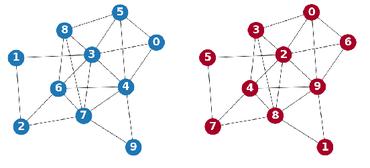Graph Edit Distance Learning via Different Attention
Recently, more and more research has focused on using Graph Neural Networks (GNN) to solve the Graph Similarity Computation problem (GSC), i.e., computing the Graph Edit Distance (GED) between two graphs. These methods treat GSC as an end-to-end learnable task, and the core of their architecture is the feature fusion modules to interact with the features of two graphs. Existing methods consider that graph-level embedding is difficult to capture the differences in local small structures between two graphs, and thus perform fine-grained feature fusion on node-level embedding can improve the accuracy, but leads to greater time and memory consumption in the training and inference phases. However, this paper proposes a novel graph-level fusion module Different Attention (DiffAtt), and demonstrates that graph-level fusion embeddings can substantially outperform these complex node-level fusion embeddings. We posit that the relative difference structure of the two graphs plays an important role in calculating their GED values. To this end, DiffAtt uses the difference between two graph-level embeddings as an attentional mechanism to capture the graph structural difference of the two graphs. Based on DiffAtt, a new GSC method, named Graph Edit Distance Learning via Different Attention (REDRAFT), is proposed, and experimental results demonstrate that REDRAFT achieves state-of-the-art performance in 23 out of 25 metrics in five benchmark datasets. Especially on MSE, it respectively outperforms the second best by 19.9%, 48.8%, 29.1%, 31.6%, and 2.2%. Moreover, we propose a quantitative test Remaining Subgraph Alignment Test (RESAT) to verify that among all graph-level fusion modules, the fusion embedding generated by DiffAtt can best capture the structural differences between two graphs.
PDF Abstract
